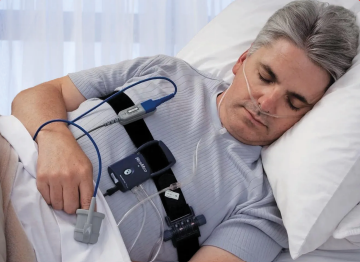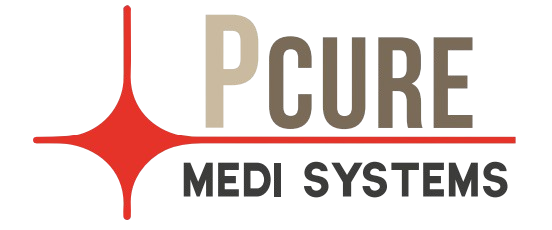Sleep study & Titration
Sleep Study & Titration is a comprehensive overnight evaluation designed to monitor and assess sleep quality, breathing patterns, and other vital body functions during sleep. It is often recommended for individuals experiencing loud snoring, daytime sleepiness, breathing pauses during sleep, insomnia, or restless nights.
During the study, several key functions are tracked—such as brain activity, eye movements, heart rate, breathing effort, oxygen levels, snoring, and body movements. These recordings help identify a wide range of sleep disorders, including obstructive sleep apnea (OSA), central sleep apnea, periodic limb movement disorder, and narcolepsy.
Titration is performed to determine the appropriate air pressure needed for CPAP (Continuous Positive Airway Pressure) therapy, ensuring effective treatment for those diagnosed with breathing-related sleep conditions

We provide comprehensive sleep study (polysomnography) services using advanced, reliable, and patient-friendly technology.
- Key Features
Key Features
Brain waves (EEG)
Records electrical activity of the brain through non-invasive sensors. Helps monitor brain function and detect abnormalities during sleep or wakefulness. Widely used in diagnosing neurological and sleep disorders.
Breathing pattern and effort
Monitors the rhythm and intensity of breathing throughout sleep or activity. Detects irregularities such as apnea, hypopnea, or respiratory distress. Provides essential insights for diagnosing and managing respiratory disorders.
Blood oxygen levels (SpO2)
Measures the percentage of oxygen saturation in the blood non-invasively. Monitors oxygen levels during sleep or daily activities to detect hypoxemia. Vital for assessing respiratory function and guiding oxygen therapy.
Body position and limb movements
Tracks body position and limb movements during sleep to identify disturbances. Helps detect conditions like restless leg syndrome and positional sleep apnea. Provides valuable data for personalized treatment plans.
Snoring sounds
Records snoring patterns and intensity during sleep. Helps identify airway obstructions and severity of sleep apnea. Supports accurate diagnosis and treatment planning.
- Common Applications
Characterized by loud snoring interrupted by temporary breathing pauses. Common symptom of obstructive sleep apnea, affecting sleep quality. Requires medical evaluation for accurate diagnosis and treatment.
Persistent tiredness affecting daily activities and alertness. Often linked to sleep disorders like sleep apnea or insomnia. Early diagnosis and treatment can improve energy and quality of life.
Challenges in initiating or maintaining restful sleep throughout the night. Can be caused by stress, medical conditions, or sleep disorders. Proper evaluation helps identify causes and improve sleep quality.
Repeated interruptions during sleep that disrupt rest and recovery. May be caused by sleep disorders, pain, or environmental factors. Addressing the underlying cause improves sleep continuity and quality.
Symptoms suggest possible sleep apnea or restless leg syndrome. Both conditions can significantly disrupt sleep and daytime function. Accurate diagnosis through sleep studies guides effective treatment plans.
Elevated blood pressure without an obvious cause or trigger. May be linked to underlying conditions like sleep apnea or stress. Proper evaluation helps identify factors and guide effective management.
- Types of Sleep Studies
Conducted in a sleep lab under the supervision of trained technicians, this test offers the most detailed analysis.
A simplified version performed at home, ideal for detecting moderate to severe obstructive sleep apnea in adults.
Polysomnography is a safe, non-invasive, and effective diagnostic tool that provides valuable insights into your sleep health. Early diagnosis and treatment of sleep disorders can significantly improve quality of life, cognitive function, and long-term health.
